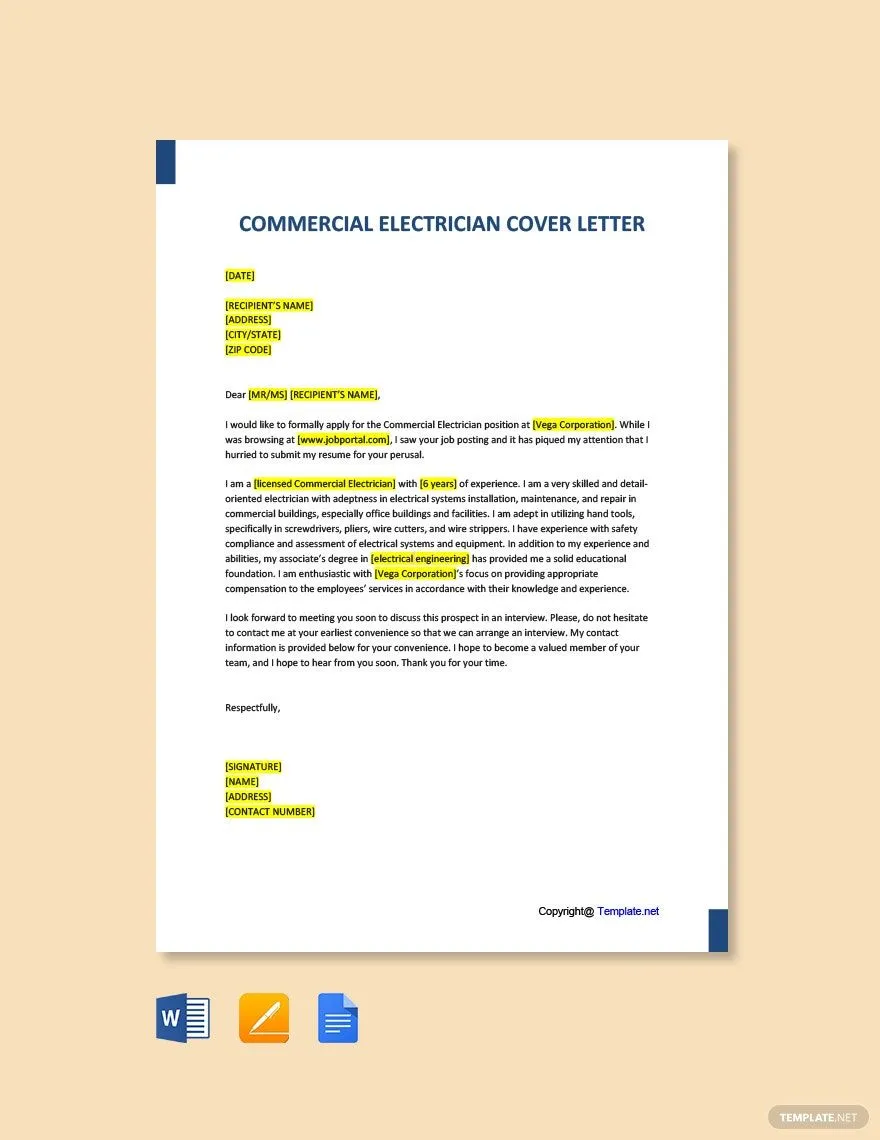What is an Electrical Cover Letter
An electrical cover letter is a crucial document accompanying your resume when applying for electrical-related jobs. It’s your opportunity to introduce yourself, highlight relevant skills, and express your interest in the specific position. Unlike a resume, which provides a factual overview of your experience, a cover letter allows you to showcase your personality, explain your career goals, and demonstrate how your qualifications align with the employer’s needs. It’s a personalized introduction that can significantly boost your chances of landing an interview.
Why is an Electrical Cover Letter Important
In a competitive job market, a well-crafted electrical cover letter can be the deciding factor in whether your application gets noticed. It demonstrates your professionalism, attention to detail, and genuine interest in the role. By tailoring your letter to each specific job, you show employers that you’ve taken the time to understand their requirements and are genuinely enthusiastic about the opportunity. A compelling cover letter can also help you stand out from other applicants by emphasizing unique skills or experiences that might not be immediately apparent from your resume alone. It provides context to your resume and provides the hiring manager an overview.
Key Components of a Winning Electrical Cover Letter
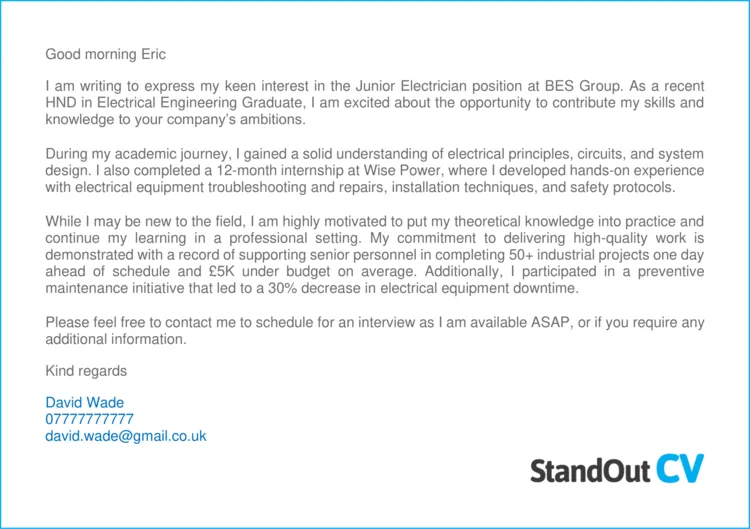
A successful electrical cover letter is structured clearly, concisely, and professionally. It should include the following essential components:
Header Section
The header provides your contact information and the date. It is essential for the employer to know how to contact you. Use a professional format.
Your Contact Information
Include your full name, phone number, professional email address, and optionally, your LinkedIn profile URL. Ensure your contact information is up-to-date and easily accessible.
Date and Recipient Information
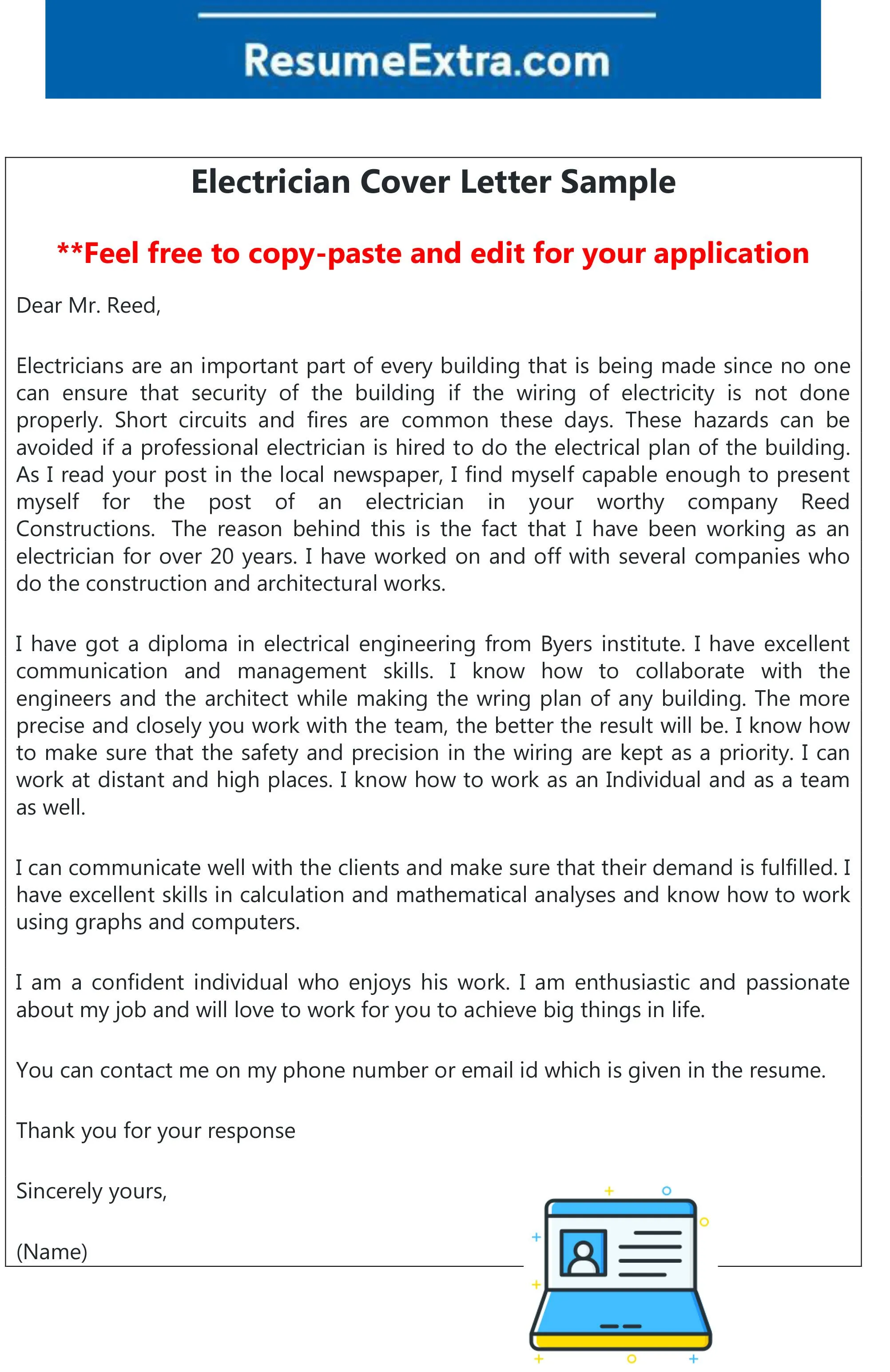
Below your contact information, include the date you’re sending the letter, followed by the hiring manager’s name (if known), their title, the company name, and the company’s address. Research the hiring manager’s name to personalize your letter.
Salutation
Use a professional salutation, such as “Dear Mr./Ms. [Last Name]” or “Dear Hiring Manager.” Avoid generic greetings like “To Whom It May Concern.” Addressing the hiring manager by name shows initiative and attention to detail. Always double-check the spelling of the name!
Body Paragraphs
The body paragraphs are the heart of your cover letter, where you demonstrate your suitability for the role and express your interest in the company.
First Paragraph Purpose
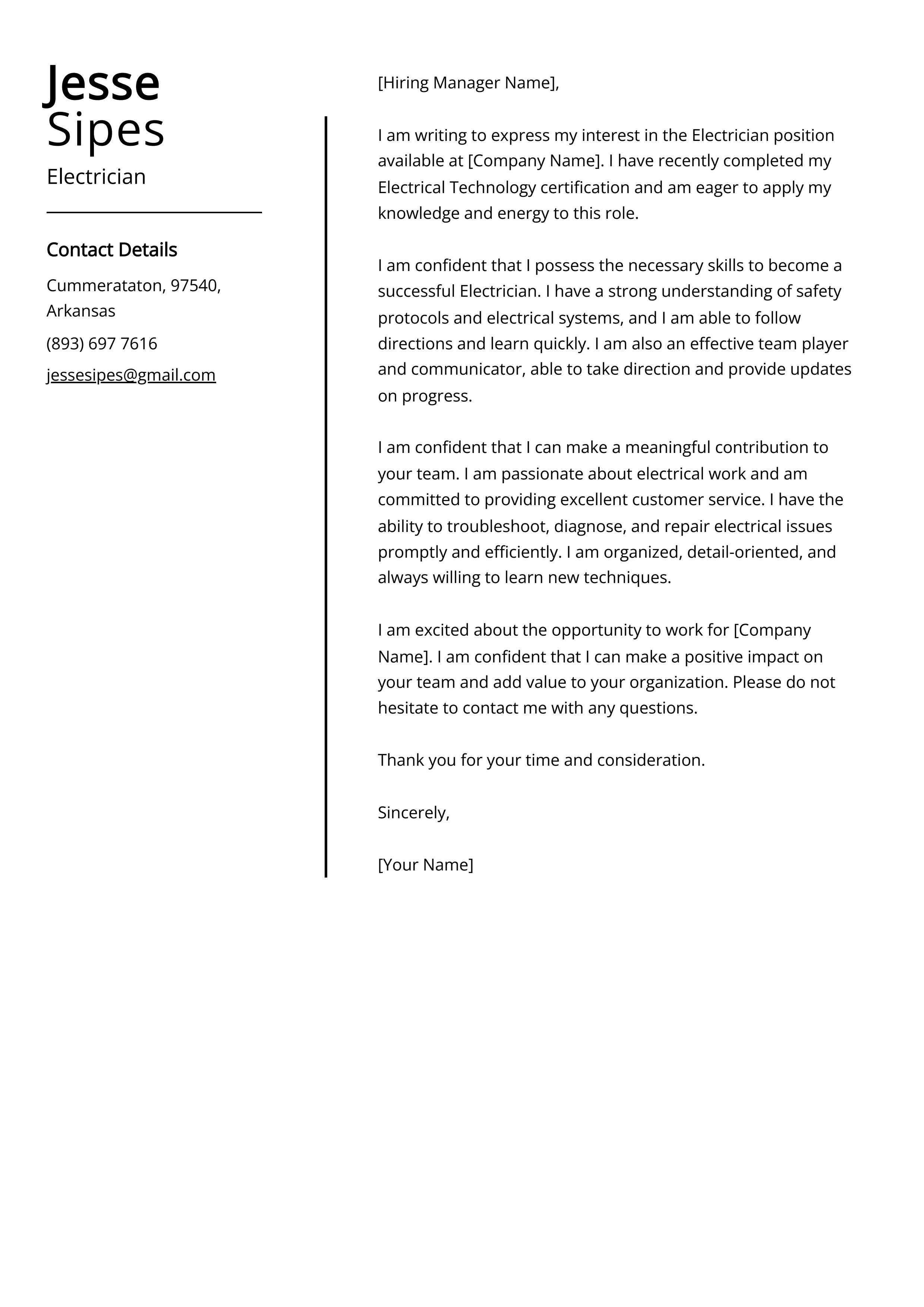
Start with a strong opening that states the position you’re applying for and how you learned about it. Briefly mention why you’re interested in the company and the specific role. This immediately grabs the reader’s attention and sets the tone for the rest of the letter. Show enthusiasm.
Highlighting Relevant Skills
In the subsequent paragraphs, highlight the skills and experience that align with the job requirements. Focus on the key qualifications mentioned in the job description and provide specific examples of how you’ve demonstrated those skills in past roles. Tailor this section to match the company.
Quantifying Achievements
Whenever possible, quantify your achievements to showcase your impact. Use numbers and data to illustrate your successes, such as “reduced electrical system downtime by 15%” or “managed a team of five electricians.” Use action verbs and results.
Showcasing Experience
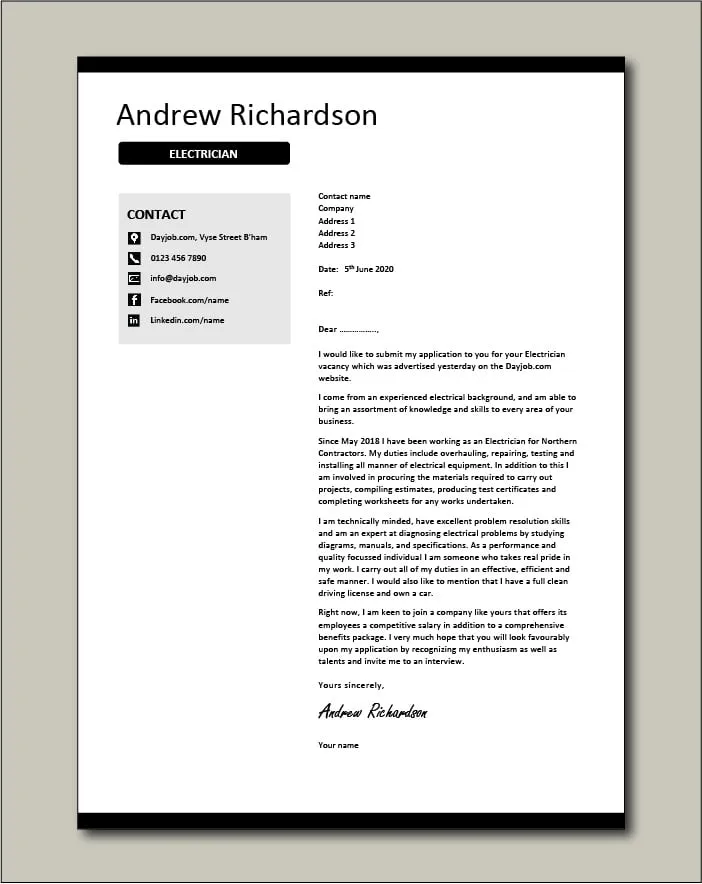
Describe your relevant work experience in detail, emphasizing your responsibilities, projects, and accomplishments. If you’re an entry-level candidate, focus on your coursework, internships, and any relevant volunteer experience. For experienced professionals, highlight your most significant achievements and contributions in previous roles.
Tailoring to the Job Description
Carefully review the job description and tailor your cover letter to match the specific requirements. Use the same keywords and phrases used in the job posting, but don’t simply copy and paste. Instead, incorporate these keywords naturally into your descriptions of your skills and experience.
Closing Paragraph
Conclude your cover letter by summarizing your interest in the role and reiterating your key qualifications. Express your enthusiasm for the opportunity and thank the hiring manager for their time and consideration.
Call to Action
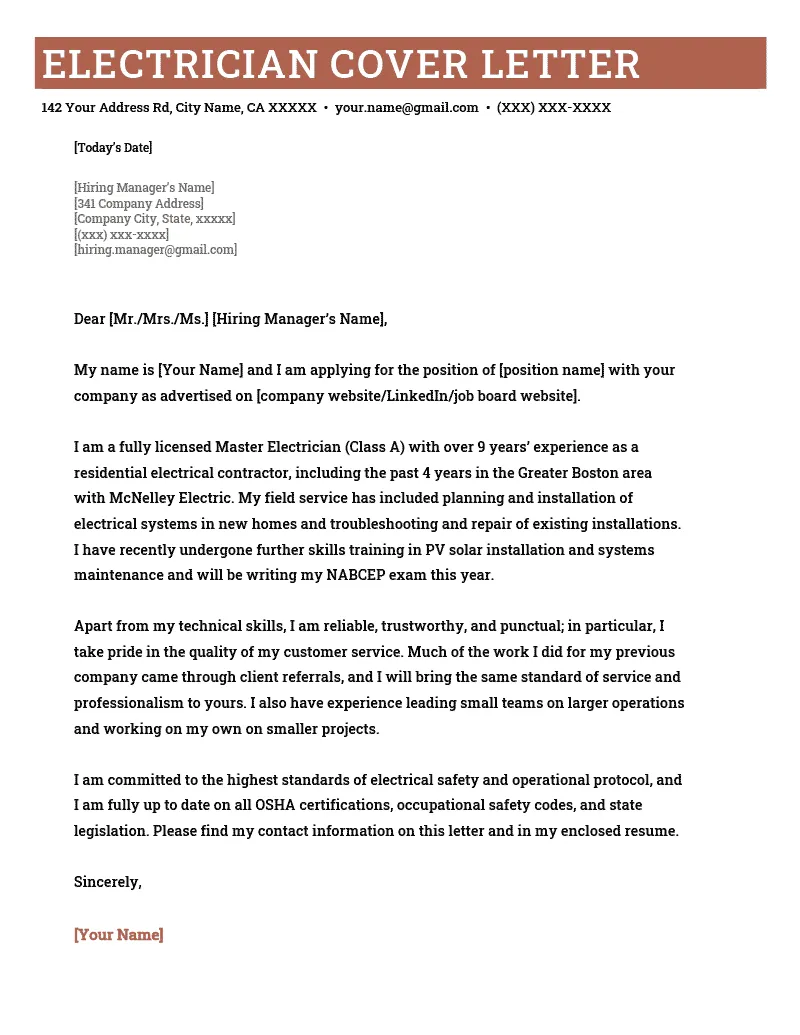
Include a clear call to action, such as stating your availability for an interview or expressing your eagerness to discuss your qualifications further. Make it easy for the hiring manager to take the next step.
Closing
Use a professional closing, such as “Sincerely,” or “Best regards,” followed by your full name. Ensure your signature is included if you’re submitting a physical copy.
Proofreading and Formatting
Before submitting your cover letter, carefully proofread it for any errors in grammar, spelling, and punctuation. A polished, error-free cover letter demonstrates your attention to detail and professionalism. Pay close attention to detail and ensure it is perfect.
Formatting Tips
Use a standard font like Times New Roman, Arial, or Calibri, and maintain a consistent font size (11 or 12 points). Use single spacing within paragraphs and double spacing between paragraphs. Keep your cover letter concise – aim for one page in length.
Proofreading Checklist
Use a proofreading checklist to avoid missing any mistakes. Check for the correct spelling of names and titles, grammatical errors, punctuation errors, and formatting inconsistencies. Consider asking a friend or colleague to review your cover letter for an additional perspective.
Examples of Strong Electrical Cover Letters
Reviewing examples of electrical cover letters can provide valuable insights and help you tailor your own letter effectively. Here are a few examples tailored to different experience levels and roles:
Example 1: Entry-Level Electrician
This type of cover letter should highlight your education, relevant coursework, any internship experience, and any certifications or licenses you possess. Emphasize your eagerness to learn and your willingness to work hard. Mention any projects you have done and describe the results.
Example 2: Experienced Electrical Engineer
An experienced electrical engineer’s cover letter should focus on your professional accomplishments, such as the successful completion of projects, your experience managing teams, and your expertise in specific areas like power systems, control systems, or circuit design. Quantify your achievements whenever possible and highlight your leadership skills.
Example 3: Electrical Project Manager
The cover letter for an electrical project manager should emphasize your project management experience, your ability to manage budgets and schedules, and your leadership skills. Highlight your experience with project planning, risk management, and stakeholder communication. Provide evidence of project success and your understanding of regulations and safety protocols. Describe your experience with all aspects of the project.
